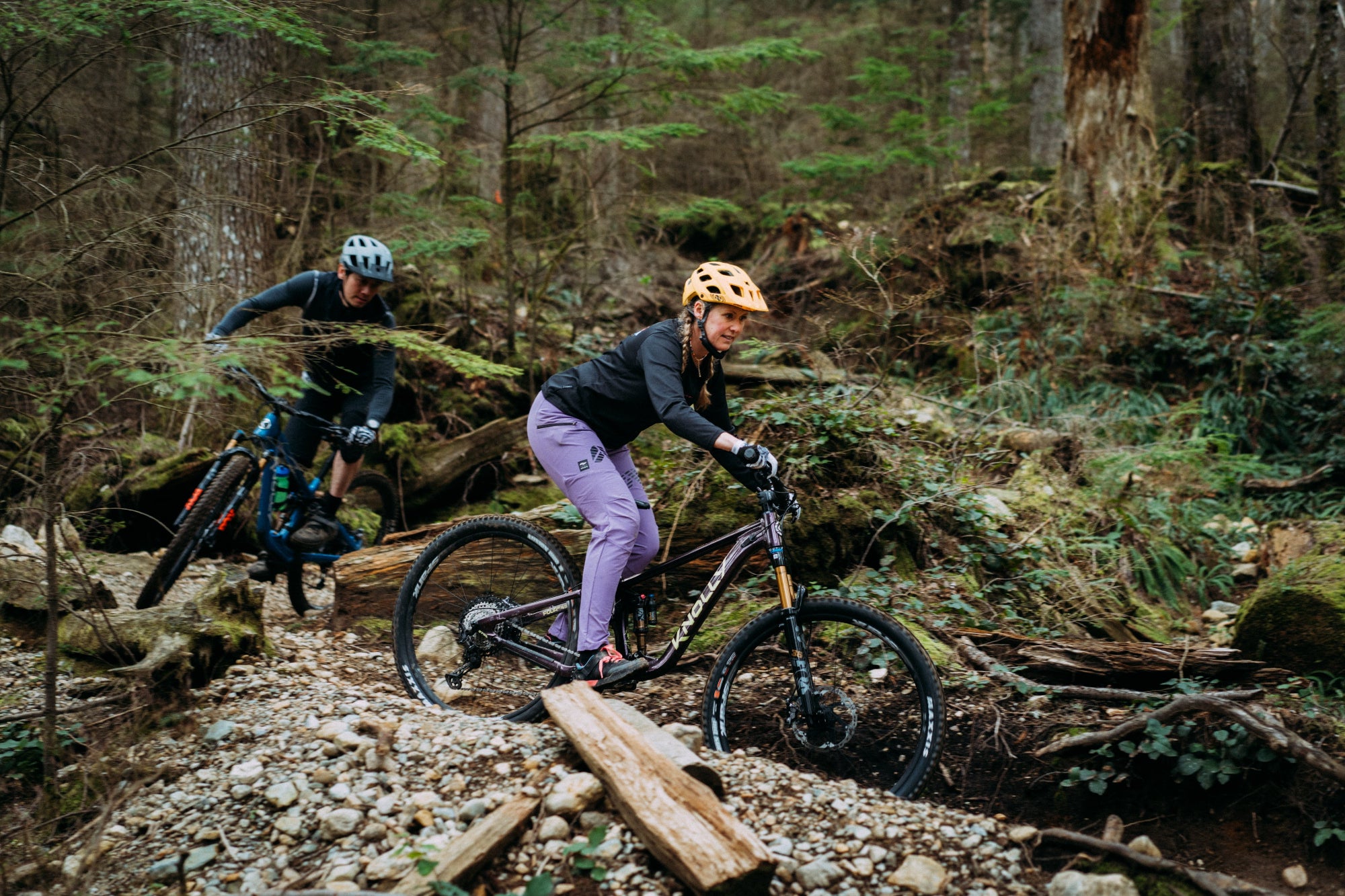Tech - Offset Straight Seat Tube Design (OSD)

The ethos of Knolly’s frame designs is to allow the rider to transition effectively between a highly efficient pedaling position and the “attack position” required for aggressive riding (and be comfortable anywhere in between). The key feature allowing this seamless transition is the offset straight seat-tube, which positions the saddle in an efficient & comfortable climbing position while moving the saddle downward and forward in the dropped position. This design element is critical in allowing maximum rear wheel travel while keeping rear suspension elements and the rear wheel away from the seat tube while under full compression.
Offset Straight seat tube advantages:
- The seat tube location can be designed so that the bike has a steep effective seat position when pedaling and/or climbing (74.5°– 75.5° effective seat tube angle).
- The saddle not only lowers but moves forward when dropped, allowing more room to maneuver above and behind the bike.
- The longest possible dropper posts will fit into the frame because the seat-tube is straight and uninterrupted (supporting 200mm+ dropper posts).
- There’s no possibility of rear wheel and rear suspension elements colliding with the seat tube and saddle under full compression.
- There’s amazing stand-over clearance.
Effective Top Tube (ETT)

The Effective Top Tube (ETT) length and how it compares to the Actual Top Tube (ATT) measurement can be confusing. Almost all modern full suspension mountain bikes use an ETT because conventional seat tube locations do not integrate well with today's modern bike geometries. This is why reach and stack measurements have become more relevant. When deciding on bike fit, ETT, stack and reach are the best measurements to use.
ETT vs ATT
- Our ETT and ATT are designed to intersect with the saddle at normal pedaling height which ensures that the ETT accurately represents the ATT when pedaling. Given that the angle between the ETT and ATT is typically well under 10 degrees, the saddle position won't deviate far for riders who are slightly above or below the ETT and ATT intersection point. Graphic: see the blue and green dotted lines as they converge near the rails of the saddle.
- It is difficult to accurately measure the ETT with a tape measure and this measurement is designed into the frame which is then manufactured accordingly. Graphic: see the horizontal blue line “A”.
- Many riders measure the ATT (Graphic: see the “B” line) and become concerned that they've purchased a frame that is too small for them. However, the ATT will always measure 1.0 - 1.5" (25-40mm) shorter than the ETT for Knolly frame models.
- If a bike is sized correctly no rider will position their saddle near the horizontal line drawn between the seat tube (post) and the center of the head tube (Graphic: see the horizontal “B” line). Most rider’s saddles are significantly higher than this line so the ATT is not a good indication of top tube length.
- The difference between ATT and ETT will vary slightly between frame model and size.
- We measure our effective top tube lengths off a line that extends from the center of the BB at roughly a 74° angle. Graphic: see the blue line running from the BB to the seat.
- The higher your saddle is, the closer it gets to this line. You can see in the image above that the center of the saddle intersects this ETT blue line.